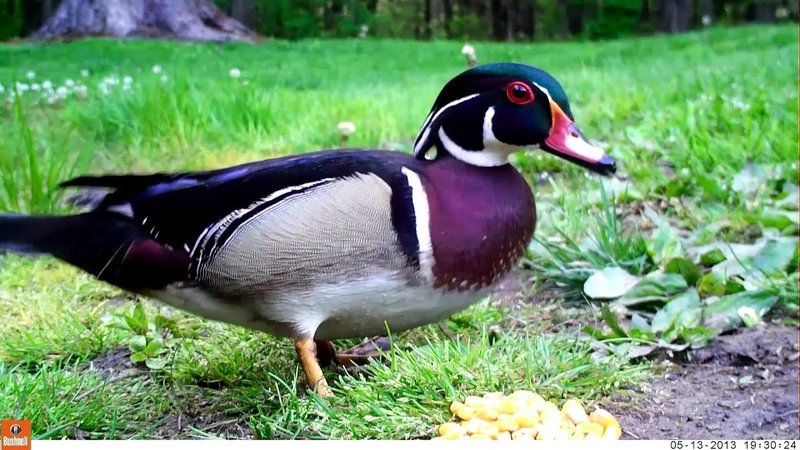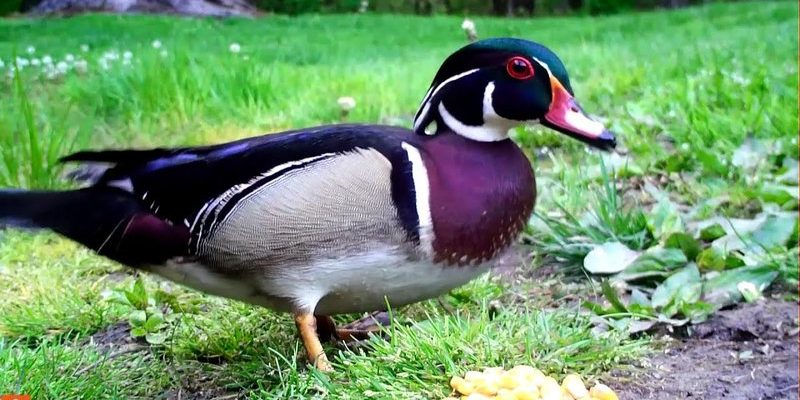
If you’ve ever spotted a wood duck perched gracefully on a tree branch or gliding across a serene lake, you might have noticed how they communicate. These vibrant birds aren’t just stunning to look at; their vocalizations are rich with meaning. Let’s dive into the *melodic world* of wood duck calls and explore what each sound signifies.
Why Wood Duck Vocalizations Are Important
Wood ducks are fascinating creatures, and their vocalizations play a vital role in their lives. By understanding these sounds, you can gain insight into their behavior and social structure. Think of it as learning a new language—one that reveals the emotions and interactions of these beautiful birds.
Firstly, vocalizations help wood ducks communicate with one another. Whether it’s attracting a mate, alerting others about a predator, or signaling annoyance, these sounds serve critical functions within their social dynamics. Just imagine when you hear a friend’s voice change with excitement or concern; that’s similar to the cues wood ducks give each other through sound.
Secondly, understanding these calls can enhance your experience while birdwatching. Next time you’re out in the wild, take a moment to pause and listen. You might hear a female wood duck making a series of high-pitched whistles, signaling her distress or caution to the rest of the flock. It’s a wonderful reminder of how intricate nature can be.
Types of Wood Duck Calls
Wood ducks use a variety of vocalizations, and each call has its distinct purpose. Let’s break down some of the most common sounds you might hear:
- Whistles: These are short, high-pitched sounds often made by females. They communicate nervousness or alertness.
- Quacks: Males are known to produce low, raspy quacks, especially during courtship. They can be quite charming!
- Chirps: Quick, sharp sounds used primarily by ducklings or younger birds to call for their mothers.
- Lounging Calls: A series of soft sounds expressing comfort and tranquility, typically heard when ducks are resting together.
Each of these vocalizations serves a unique purpose. For instance, if you’re near a pond and hear a female whistling frantically, it could mean she’s spotted danger nearby. On the flip side, the softer lounging calls indicate everything is calm, and the ducks are at ease.
The Role of Vocalizations in Mating
Mating season brings out some of the most distinctive wood duck vocalizations. During this time, males use their calls to attract potential partners. Imagine a well-rehearsed serenade; males often compete by showcasing their vocal talents to impress females.
One of the most captivating sounds during this period is the raspy, low-frequency quack. This call is a way for males to assert their presence and communicate their readiness to mate. Female wood ducks are particularly selective, and they pay attention to these calls when choosing a mate. So, a male’s vocal performance can make all the difference!
Interestingly, this competition among males means that the strongest and most vocal males often get noticed first. It’s nature’s way of ensuring that only the best genes get passed on. Think of it like a talent show where the judges (the females) pick the contestant (the male) with the best performance!
How Vocalizations Help in Nesting
Once mating has occurred, wood ducks prepare for nesting. Vocalizations become an essential part of this process as well. After the female lays her eggs, she will often produce soft, maternal sounds, signaling to her partner and alerting them to stay close. These calls are soothing and serve to strengthen the bond between the couple.
You might also notice that female wood ducks use calls to communicate with their ducklings. When the ducklings hatch, they instinctively respond to their mother’s chirps, guiding them to safety and teaching them essential survival skills. This connection gives a glimpse into the nurturing side of wood ducks—a lovely aspect often overlooked.
Understanding Distress Signals
Like many animals, wood ducks have vocalizations that signal distress or danger. These calls are usually high-pitched, frantic whistles and can be incredibly effective in alerting other ducks about potential threats. When you hear these sounds, it’s often a sign that something isn’t right.
Imagine you’re at a picnic, and someone spots a snake slithering nearby. The sudden gasps and shouts from the group would be similar to how wood ducks react when sensing danger. It’s a way to protect themselves and ensure the safety of their flock.
If you’re lucky enough to witness this in real-time, it can be quite an eye-opening experience. It’s as if you’re getting a front-row seat to a conversation that underscores the importance of community within these birds.
Observing Wood Duck Vocalizations in the Wild
If you want to hear wood duck vocalizations for yourself, it’s vital to know when and where to look. These birds are often found near fresh water, such as lakes, rivers, and wetlands. Early in the morning or late in the evening are typically the best times to spot them as they tend to be more vocal and active during these hours.
As you observe, take your time to just listen. Patience is key. You might need to sit quietly for a while to catch their sounds without startling them. When you do hear a call, try to identify it based on what you’ve learned. Is it a whistle, a quack, or maybe a chirp?
Using binoculars can enhance your experience, allowing you to see their beautiful plumage while you listen to their calls. It’s like a live concert where the wood ducks are performing just for you!
The Impact of Environment on Vocalizations
Interestingly, the environment can influence how wood ducks vocalize. Factors like background noise levels, habitat type, and even weather conditions can all affect their sounds. For instance, if you’re in a bustling, urban area, the wood ducks may vocalize differently in response to the humming of traffic compared to a serene, quiet wetland.
Additionally, if there’s a strong wind, their calls might be softer or less frequent as they conserve energy. Think about how you might talk differently at a loud party compared to a quiet coffee shop; wood ducks adapt their communication in similar ways.
Next time you find yourself near a body of water where wood ducks are present, pay attention to these factors and notice how they affect the way the birds communicate. It’s a reminder of how interconnected nature is and how adaptable its creatures can be.
In closing, wood duck vocalizations are much more than simple sounds. They are rich with meaning, indicating everything from distress to affection. By tuning in to their melodic calls, you can unlock a deeper understanding of these beautiful birds and their lives. So, the next time you hear a wood duck’s call, take a moment to appreciate the complexity behind the sound—it’s a symphony of nature that truly deserves your attention.

